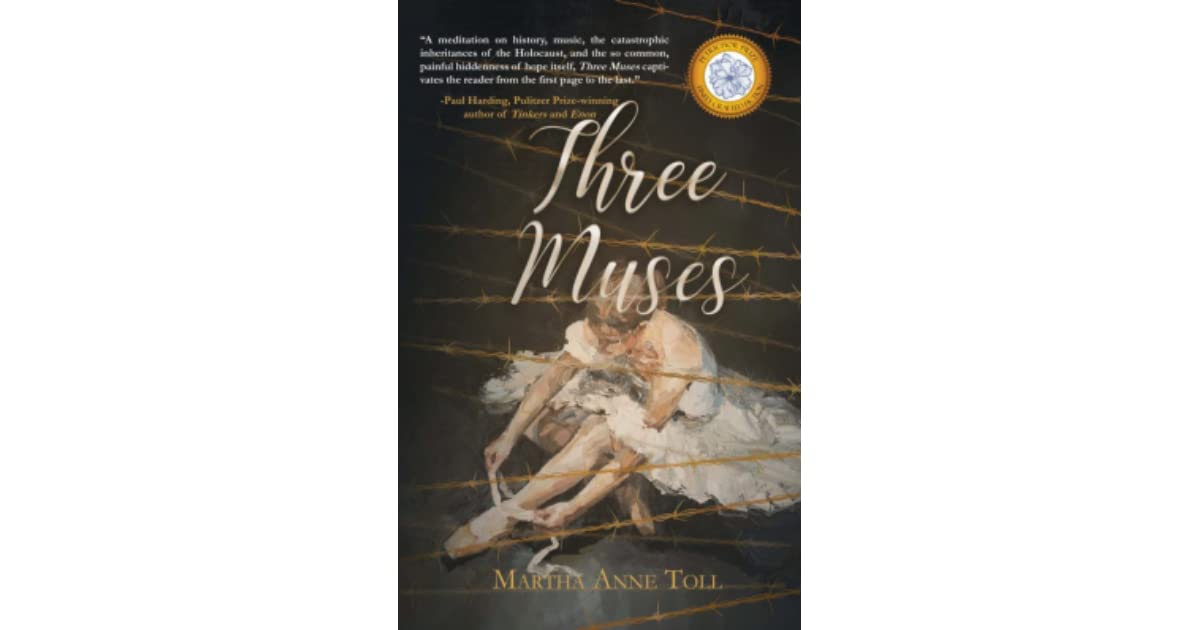
Martha Anne Toll on “Three Muses”
In Martha Anne Toll’s Three Muses (Regal House Publishing, $18.95), we’re introduced to John Curtin, who is studying to become a psychiatrist. John has suffered lasting damage from having been forced to sing for the concentration camp kommandant who murdered his family; now, more than 20 years after WWII ends, he’s still a haunted soul, struggling to forgive himself and find peace.
One night he goes to the ballet and is enchanted by the performance of Katya Symanova, Prima Ballerina of the New York State Ballet. Katya has demons of her own; she yearns to free herself from an abusive relationship with her choreographer, a man who makes her a star but also controls her life. As John and Katya find their tentative way towards one another, the sorrows of the past begin to fade, and replaced by the promise of new beginnings. Debut novelist Martha Ann Toll talks to Fiction Editor Yona Zeldis McDonough about the redemptive power of art.
YZM: You write with such insight and precision about both the art and discipline of ballet; was classical dance a significant part of your life?
MAT: I appreciate that, thank you. I fell in love with classical dance very early. My mother took me to my first class when I was four or five and I was hooked. My mother enrolled me in the School of the Pennsylvania Ballet (now Philadelphia Ballet) where I was enthralled with seeing how the professional dancers rehearsed. Watching what went on in that room was a gift. I had no talent for ballet, unfortunately, but I have been an avid watcher ever since.
YZM: John has a particularly traumatic past; was his story based on an actual one?
MAT: John is a composite of stories I heard growing up and through my reading about parents who pushed their children away to save their lives. There was the Kindertransport that got about 10,000 European children to England, most of whom never saw their parents again. The great Hebrew writer Aharon Appelfeld was on his own from age seven to fend for himself in Central Europe (his mother was murdered in front of him). These stories are so painful as to be unbearable, but I think they have to be told. There is something about the reality of these children that brings home the Holocaust in a very specific, visceral way.
YZM: Ballet and music have dual meanings in the novel, both as sources of pain, and sources of healing; can you talk about this?
MAT: I appreciate that you noticed that! I was particularly interested in John, who survived the Holocaust by singing for the kommandant who murdered his family, and who now cannot tolerate music of any kind. How ironic, then, that he falls in love with Katya, a ballerina whose art is completely enmeshed with music. Three muses, Song, Discipline, and Memory frame the novel. John is loosely associated with Song, and Katya with Discipline. Memory has hold over them both. These muses are sources of both love and pain, and that mixture is at the heart of the novel.
YZM: Who inspired the character of Katya? And what about Mr. Yanakov, who seems to share many qualities with George Balanchine?
MAT: Katya came full blown out of my head. But you are right, Mr. Yanakov stands a bit in George Balanchine’s shadow. By keeping up with ballet growing up, I had read about Balanchine, and had seen many of his ballets. However, I purposely did not research him for this novel. I needed the freedom to make up whatever I wanted to about Mr. Yanakov. I am in the process of reviewing Jennifer Homans’s massive and truly brilliant biography of Balanchine, Mr. B, and I see that there are some parallels, but Mr. Yanakov is a purely fictional character. My character Simon Worthington is very loosely inspired by John Cranko, who left England for Stuttgart, following a prosecution for being homosexual. As is always the case in such wrongheaded prosecutions, Cranko was England’s loss and Stuttgart’s gain.
YZM: This is a first novel; what, if anything, surprised you about turning from non-fiction to fiction?
MAT: I have to laugh. In fact, I have been writing fiction for twenty years, including completing three other (unpublished) novels. I turned to essays and book reviewing about ten or so years ago because I was having so much trouble getting the fiction published! I do hope those other novels will see the light of day someday. As to nonfiction, I love book reviewing because I love reading, and reviewing is a wonderful way to get books out into the world.



